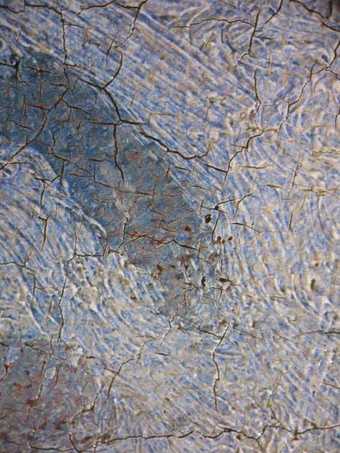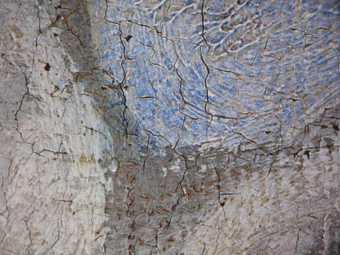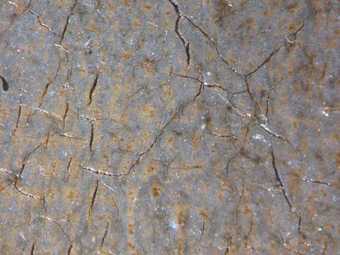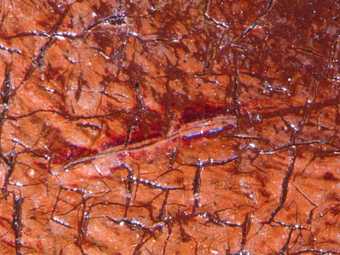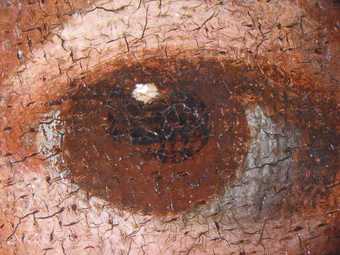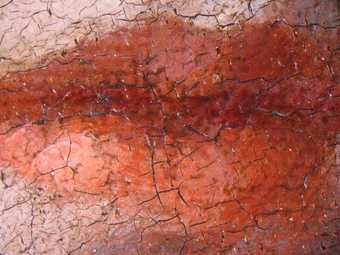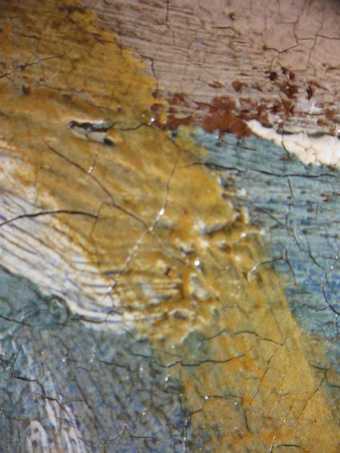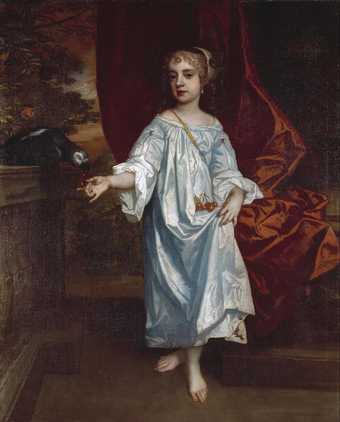
Fig.1
Sir Peter Lely 1618–1680
Girl with a Parrot
c.1670
Oil paint on canvas
1245 x 1016 mm
N01016
This painting is in oil paint on canvas measuring 1245 x 1016 mm. The linen is plain woven with threads of uneven thickness: there are approximately 13 vertical and 12 horizontal to the square centimetre (fig.2). There is cusping of the canvas weave on all sides, and the original tacking edges are present.1
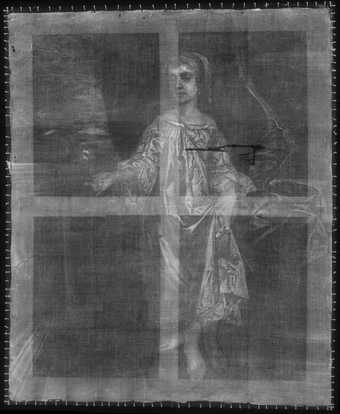
Fig.2
X-radiograph of Girl with a Parrot
The ground is opaque salmon pink colour, smoothly applied (figs.3 and 4). Its pigment content is as follows: lead white, red earth with a trace of vermilion, bone black, cologne earth, a trace of finely ground orpiment, glassy particles, sienna earth, chalk and yellow lake, all bound together in oil. There is no priming.
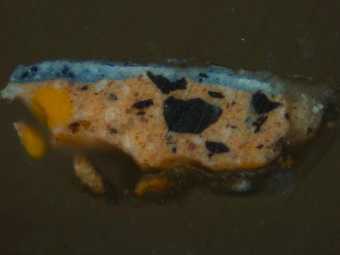
Fig.3
Cross-section through the blue dress near the sitter’s right shoulder, photographed at x320 magnification. From the bottom: salmon pink ground; opaque blue paint of dress; thin blue glaze
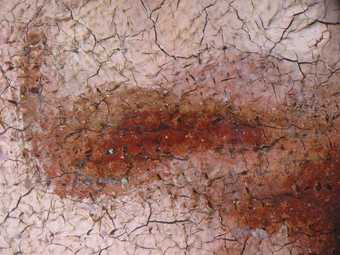
Fig.4
Microphotograph of the nostril taken at x8 magnification, showing the ground left unpainted to form the half-shadow
As we have found consistently in this study of Lely, no underdrawing is discernible with infra-red or microscopy (fig.5).2 The figure was probably laid in with reddish brown paint. This colour was often left to show as the shadowed outlines of the flesh tones, and in this painting we can see something of this technique in the fingers, though the artist went on to strengthen these lines with similar paint at a later stage of painting (fig.6). Elsewhere, low-key underpainting is visible in cross-section in some areas, for example a dull opaque green in the foliage, but it is not extensive or elaborate. The painting was mainly built up from thick, opaque tones applied wet-in-wet onto the primed canvas, followed by glazing in some areas to heighten the tones. Microscopic examination suggests that the background and sky were painted first, followed by the mid-ground, then the curtain drapery and finally the figure; but many minor adjustments to boundaries were made during the process and the child’s left foot was at one point further to the right. Infra-red reflectography (fig.5) shows that the child was originally holding her frock so that its hem reached her left knee; this was altered during the course of painting.

Fig.5
Infra-red reflectograph of Girl with a Parrot
All the paint is well bound in oil and is composed of complex mixtures of pigments. The pale blue robe, which is worn over a white shift, is composed of mixtures of lead white with indigo; it was originally glazed with translucent blue paint containing ultramarine mixed with lead white, black, smalt and pipeclay. This glaze survives only in the troughs of the brushwork (figs.7, 8 and 9).
The red curtain was also glazed with translucent red tones, which have barely survived the passage of time (fig.10). The sky must originally have been a brighter blue. The pigment mixtures used there are complex: a microscopic sample from the palest area contained lead white, smalt, azurite, ultramarine, black and vermilion plus a trace of yellow lake. The smalt in the mixture has discoloured with time. Pigment mixtures elsewhere in the painting are mainly ochreous, with pigments such as azurite, vermilion, orpiment, black, Cologne earth and lakes added to animate the tones. A sample from the yellowish green foliage, for example, contained azurite, lead white, yellow earth pigments, orpiment, smalt and bone black.
The painting is in reasonably good condition, though old, abrasive cleaning methods have thinned all the dark areas as well as damaging the blue glaze on the costume. It has been lined at least twice in its life, most recently in 1987. The present varnish also dates from 1987 when the painting was cleaned at Tate.
January 2006


